A Short History of Women’s Fashion – 1900 to 1969
Introduction
In 2012, Paris, New York, London and Milan are the fashion capitals, and the bestfashion houses in the world are to be found there.But – apart from a brief deferral to the USA during the Second World war – it was the French who remained almost unassailable, with names like Dior, Chanel and Givenchy that epitomize fashion by the mere utterances of their names.The language of fashion is French, and the leading fashion magazines like Vogue, founded back in 1892, and later – Elle, founded in 1945 – have set the standard for women’s fashion reviews, exposure and marketing. The dates of the Paris fashion week, London and Milan fashionweeks are still determined by the French Fashion Federation. Also it is impossible to examine fashion trends without highlighting the leading names in dress design from each era.
Fashion Timeline – Pictorial History of Women’s Dress -1900 to 1969 – click to enlarge.
Women’s Fashion – 1900 to 1940.
1900 to 1914 – The Belle Epoch.
A decline in restriction and the increasing influence of naturalness were the chief characteristics of the changes in women’s dress during the first ten years or so of the 20th century. While the 19th century abounded in bustles, crinolines, polonaises, dolman’s, abundant frills and furbelow’s of every description, the new century was bowing to simplicity.
From the humble beginnings of the ‘walking suit’ of the late 1890′s, women’s clothing designs strove – in tandem with their fight for independence, to be more practical, feminine and free-form.This was the Belle Epoch or Beautiful Era, when the world at large was at peace and in this era - creativity flourished in music, art and design. With London occasionally raising its head above the parapet, it was really a game of tennis between New York and Paris. On the American side, a well known name was Lucille Ltd [ Lady Duff Gordon - a survivor of the Titanic and on the French side - Paul Poiret.
From the humble beginnings of the ‘walking suit’ of the late 1890′s, women’s clothing designs strove – in tandem with their fight for independence, to be more practical, feminine and free-form.This was the Belle Epoch or Beautiful Era, when the world at large was at peace and in this era - creativity flourished in music, art and design. With London occasionally raising its head above the parapet, it was really a game of tennis between New York and Paris. On the American side, a well known name was Lucille Ltd [ Lady Duff Gordon - a survivor of the Titanic and on the French side - Paul Poiret.
The popular image was the Gibson Girl - shapely s-bend corseted women all trying to out do each other with extravagant millinery. Hats were large and loud - like the Merry Widow, but as the Edwardian Age drew to a close with the Great War, the noble class drew their last breath and practicality - particularly in women's millinery, took precedent.
The Edwardian Silhouette.
Before the 1900's, women's corsets were boned instruments of torture, that belong more in the Tower of London than on a woman's body. While the waists, by today's standards, were still impossibly tiny ; the new straight front replaced the skewered waist-bone, and when it was found that it improved the natural grace of a woman's movement, it was quickly adopted and thus in response, skirts became softer and made of more supple materials, though still fitted tightly to below the knee and then spread into a flowing train.
By 1906 the train was gone and skirts began to rise above the ankle as well as lose their tight fitting corseted look. The Edwardian mode was a new casual style that is still very pretty to look at – as these Edward Sambourne photos testify. Sleeves were puffed at the shoulders and slim from the elbows. Lacy frills appeared on blouses .The shoulder line dropped. A drooping puff at the wrist helped to mark out the new silhouette. Thus the ‘Gibson Girl’ was born – a confident athletic, graceful woman. However there was still no real advance in dress. Getting dressed was still a laborious task for an Edwardian lady, requiring – if she could afford it – a maid to help her into one layer after another – from chemise, drawers, corset, corset cover, petticoat and skirts and very often – depending on her station – in and out of several outfits a day from tea gowns to evening dress. By 1911 the straight front of the corset, with its move towards health, and the increasing charms of naturalness opened all eyes at last to the attractiveness of slenderness. Modern Priscillareported in 1911 that “This season the straight up-and-down silhouette is the fashionable one, the aim being to give the effect of an un-corseted figure.”.
Post Impressionism and The Ballet Russes.
Two events occurred that quietly began to shake the foundations of the fashion world. In 1910 Roger Fry’s Post Impressionist exhibition and then following his 1906 Russian Art exhibition – Serge Diaghilev‘s Ballet Russes opened to great acclaim in London in 1911. the production of Scheherazade – with its swirling dervish costumes designed by Leon Bakst – inspired Paul Poiret to such an extent that he often claimed to have ‘ liberated’ women single-handedly with his new ‘looser costumes’.
Two events occurred that quietly began to shake the foundations of the fashion world. In 1910 Roger Fry’s Post Impressionist exhibition and then following his 1906 Russian Art exhibition – Serge Diaghilev‘s Ballet Russes opened to great acclaim in London in 1911. the production of Scheherazade – with its swirling dervish costumes designed by Leon Bakst – inspired Paul Poiret to such an extent that he often claimed to have ‘ liberated’ women single-handedly with his new ‘looser costumes’.
Edwardian hairstyles.
Hairdressing received much attention too. Marcel waves, arranged in ‘pompadour,’ supported and inspired Edwardian hats with curves, picture hats, large hats well trimmed with feathers or loops of ribbon, tried to vie with the splendor and shape of the hair !
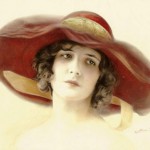

By 1910 the skirt trains had disappeared and hips became more emphasized with little semi fitting coats, cut away to reveal frills. Freedom of movement was now demanded by more and more women. One popular accessory which remained fashionable until 1910 was the parasol ! No women was seen without one. A curious garment which took hold in women’s wardrobe around 1910 was the ungainly and aptly named ‘hobble’ skirt or hobble dress. It’s style – made popular by the likes of Lucille and Poiret would clamp the knees tightly together, which of course made movement a tad difficult. this combined with the new large hat fad, made for an interesting spectacle in the likes of London’s Hyde park on a sunday afternoon ! Events however were to overtake the frivolities of hobble dresses, along with corsets ,crinolines, parasols and the delicacy of papier poudre makeup!
1914 to 1939 – The Golden Age of French Haute Couture.
The influence of the First and Second World war on women’s fashion is seismic to say the least.
During the First World war, women worked in factories, drove ambulances, tended the wounded in field hospitals, and by necessity, rearranged their wardrobes to suit. Skirts became even shorter, hair was either tied up or cropped, and fashion designers were for a time, out-paced by the march of history itself. Tailored suits with gentle waists and easy movement became the norm and increasingly demanded by women. The first sportswear and genuinely feminine swimwear began to appear after 1918. New American synthetic materials such as rayon and later nylon, were for a time not openly welcomed by the old guard of fashion houses. But young guns like Coco Chanel and Madame Vionnet saw a distinct advantage to the idea of mass production - the possibility that all women, regardless of income, could be glamorous and fashionable.
During the First World war, women worked in factories, drove ambulances, tended the wounded in field hospitals, and by necessity, rearranged their wardrobes to suit. Skirts became even shorter, hair was either tied up or cropped, and fashion designers were for a time, out-paced by the march of history itself. Tailored suits with gentle waists and easy movement became the norm and increasingly demanded by women. The first sportswear and genuinely feminine swimwear began to appear after 1918. New American synthetic materials such as rayon and later nylon, were for a time not openly welcomed by the old guard of fashion houses. But young guns like Coco Chanel and Madame Vionnet saw a distinct advantage to the idea of mass production - the possibility that all women, regardless of income, could be glamorous and fashionable.
The Flapper begins to evolve.
In 1914 came the hoop skirt, raised eight inches and with a new circular silhouette – without stiffening, then the chemise frock from the House of Worth, with its Magyar sleeves covering the upper arm, exposing the neck, and as free at the waist from corsetry as a peasants smock. Soon, Worth – drawing heavily from the Italian renaissance, were producing simple one piece frocks which hung straight from the neck and girdles or belted slightly below the waistline.
Then Jeanne Lanvin produced an even simpler model with round neck and elbow sleeves, held at the waist by a tasseled girdle, that became the beau-ideal of every woman who attempted to make a frock for the first time. It was the beginning of theFlapper dress.
Coat frocks in navy or covert suiting took the place of the coat and skirt, while outdoor clothes were strongly marked with the spirit of war – effeminate versions of trench coats and other visible signs of military ethos. While peg top and barrel skirts came and went – the simple straight-line one piece frock took precedence and has dominated both day and evening wear ever since!
Then Jeanne Lanvin produced an even simpler model with round neck and elbow sleeves, held at the waist by a tasseled girdle, that became the beau-ideal of every woman who attempted to make a frock for the first time. It was the beginning of theFlapper dress.
Coat frocks in navy or covert suiting took the place of the coat and skirt, while outdoor clothes were strongly marked with the spirit of war – effeminate versions of trench coats and other visible signs of military ethos. While peg top and barrel skirts came and went – the simple straight-line one piece frock took precedence and has dominated both day and evening wear ever since!
By 1917 – women’s frocks were sleeveless, with decolletage as low as an evening gown. And evening gowns themselves now daringly exposed women’s backs. Short hair was accepted – as most women worked in some way or the other for the war effort. Swimsuits in the USA dared to change more rapidly than anywhere else. the early 1920s saw swimsuits revealing more leg and worn often with black stockings. But by 1922 the popular Jantzen sport swimwear, with its sleek body hugging design was to take the world by storm.
Paris Fashion Houses – All Eyes turn to France.
With the exception of the odd innovation from the USA like the jumper dress – a simple jumper belted at the waist and trimmed with narrow white braid and worn over a pleated skirt and Jantzens “Diving Girl” swimsuit, whose slinky rib-stitch silhouette inspired fashion designers in Europe to create more and more daring and revealing dress styles – it was to France that all eyes now turned.
In England, a popular jaunt among the wealthy was to hire a plane and fly over to see the latest ‘fashion plays’ as they were originally known. Oddly enough, the first recognized fashion house was The House of Worth – named after its founder – Englishman Charles Worth and the name was still dominating Paris designs in the 1920s. The top fashion houses in Paris was Worth, Jacques Doucet – who gave Paul Poiret, the inventor of the Hobble dress, his start. Poiret’s own fashion house went out of business sadly after the war, Jean Paquin – the first woman to open her own fashion house in the world !, Callot Soeurs ( run by four sisters ) and millinerCaroline Reboux who pioneered the now famous Cloche Hat - one of the defining design images of the Flapper days of the 1920′s.
Contrary to popular myth – the corset was still very popular amongst women, with a few exceptional flappers throwing them away in favor of a simple chemise and rolled stockings. The 1920s Garconne look could still be achieved with the new cylindrical elasticized corsets which were much more pleasant and bearable to wear. Restriction became instead ‘control’ and in one form or the other – control foundation wear [ girdles, panty girdles, and waist clinchers have been with us ever since. As 1920s fashion quickly evolved - women's styles settled somewhere between the garconne or 'boyish' look of straight-cut chemise dresses to the more exotic 'Robe de style' of fuller flouncy skirts and dresses.
Costume jewelry was now a major style accessory thanks to Chanel, whose Paris jewellery shop specialized in faux gems - designed to decorate and actually enhance a dress rather than just flaunt wealth. her jewellery was cheap and made from paste. Chanel herself was seen to wear ropes of fake pearl necklaces in the early 1920s and this created a fad which was copied by 'bright young things' the world over.
1920s Hairstyles
Hairstyles took a while to shorten but by 1923- barbers were offering the big chop for any women willing to dare. To get your hair bobbed or cropped was the utmost in fashion for any young woman. By the late 1920s, older women had succumbed as well and the short hair worn with various shapes of cloche hat was the general style.
Paul Poiret, was without any doubt the most famous of the Edwardian and post Edwardian designers. He also of course a great self publicist - as was his American counterpart - Lady Duff Gordon of Lucille. His early start from selling cape and scarf designs to Madeleine Cheruit, a leading dress maker of the 1880's brought him to the attention of Jacques Doucet and later to the House of Worth.
His love of all things oriental made him rather notorious in his early career. Paul Poiret's Kimono coat was his most successful design which helped make a name for his own couture house, established in 1903.
His fashions were essentially only affordable by the rich, though he helped talented women from lower income classes to find work by creating the Ecole Martine design school. He also became the first famous designer to create a fragrance company –Parfums de Rosine. His greatest contribution in retrospect was possibly his flair for marketing and his huge appreciation of the art world and in particular – post impressionist displays such as the aforementioned Ballet Russes; his designs were not particularly innovative or even practical. However his simple straight cut and rectangular designs marked a beginning of modernism in clothing.
The top three European women designers of the 20th century
Madame Vionnet – took her first significant work with the Callot Soeurs, where she refined her craft in cutting, fitting, and sewing dresses, until she was engaged by the House of Doucet. She established her business in 1912 and quickly began to make Poiret’s designs seem dated .She popularized [ though did not invent ] the bias cut , where a woven fabric is cut at an angle of 45 degrees to its major seam lines, allowing fabric to hang and drape in sinuous folds and stretch over the round contours of the body. A Vionnet dress could be pulled on over your head and pulled off in the same manner.
Her gowns were an ingenious re-employment of bias stretch, coupled with draping live models during the construction phase, which brought a gentle womanliness to dress fashion and heralded the beginnings of the free-form designs of the 1920′s.
Coco Chanel – democratized fashion like no one else and helped bring haute couture designs to ordinary working women. She opened her first store – a millinery shop in Paris’s Rue Cambon in 1910, In 1913 she began selling sportswear for women in her Paris salon – set up by her monied friend Boy Chapel.
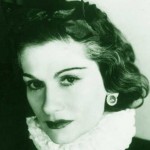

Not a corset in sight! Unconventional would have been an understatement about Coco. She grabbed men’s clothing and adapted them with abandon for women. Her version of the three piece suit consisted of a cardigan, pullover sweater and a skirt made out of patterned jersey knit fabric. Her clever use of knitted jersey transformed the status of knitwear, originally used only for undergarments. By 1916 she had paid back Boy Chapel – which in itself was unusual as most ‘gifts’ to women to help them open such folly’s as ‘salon’ were not expecting return. She opened another store in Deauville, and it was on a chilly day there when she borrowed a fisherman’s jersey to wear- that her life changed.
Taking the knitted jersey, she fashioned a chic dress from it. It’s difficult to say for certain whether she invented it, but Chanel’s creation of the dropped waist dress in 1918 – 1920 certainly heralded the ‘flapper’ look of the coming decade. Her own personal favorite color being black, inadvertently - led her to ‘invent’ the ‘little black dress’ in 1926. A simple low back evening dress – but it was destined to become truly iconic.
Elsa Schiaparelli, an Italian fashion designer, was as an artist first and foremost, rather than a draper like Vionnet. She first burst to prominence in 1927 in Paris with her ‘white bow’ knitted sweater which was featured by Vogue in December 1927 with the caption “artistic masterpiece”.
In the 1930s she continued Chanel’s idea of comfortable sweaters and cardigan jackets, but it was her suits, and evening dresses that made her name. Schiaparelli moved boldly away from Chanel’s two tone colors by her use of ‘ shocking pinks’ and other vivacious colors. She embraced the art scene with stylish deco and cubist dress patterns and clever appliques, and her friendship with Salvador Daliled to her design of the infamous shoe hat in 1937 – inspired possibly by a photo of Dali with one of his wife’s shoes perched on his head and the beautiful Tears dress.
While these forays into the whimsical may have detracted somewhat from the real magnitude of her contribution to women’s fashion, the House of Schiaparelli dominated attention in the USA in the early 1930s, with her swimwear [ she designed the first backless swimsuit to allow women to get a more even suntan! ] , beach pajamas and evening dresses featuring in dozens of Hollywood movies.
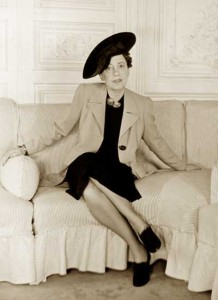

Elsa also laid the foundations in 1938 for the big shouldered look of the 1940′s when she began to add padding to her evening suits and coat designs. Schiaparelli’s interest in fasteners led her to produce many clever alternatives to buttons, including elastic skirt hooks, nickel clips, and most famously the zip fastener. Truly one of the great fashion designers.
The 1930s – Recession fashion.
The 1930s came in with a bang – the Wall Street Crash. Whether it was a coincidence or not – Jean Patou’s 1929 winter collection featured a dramatic drop in hem lengths, and this has often been attributed to the crash that October. But conservatism was the only response there could be with the boom time of the 1920s over. The Flappers day was done and even wealthy folks had to start being a bit more frugal. The gamine look was out and feminine curves were back in. Cloche hats hung around till 1933 until the new French beret styles, worn at an angle, took the fashion world by storm.
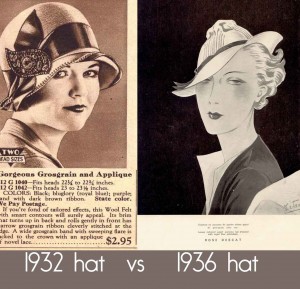

A more tailored, angular look appeared in skirts, with single front seams popular. Despite the recession – it was the age of Hollywood glamor,colorful fashion magazines featuring beautiful actresses wearing the ‘latest’ from the catwalk. Film costumes occasionally became hugely popular like Joan Crawfords ‘Adrian’ designed ruffle sleeved evening gowns in her film Letty Lynton.
France still reigned, but American consumerism was beginning to take hold. Lingerie was back in vogue, with brassieres now ‘emphasizing’ the bust rather than strapping the breasts flat. The new synthetic elastex revolutionized shape wear and it was now actually pleasurable rather than torture to wear a girdle or corset.
Beauty and health continued to become more popular,with women joining health clubs everywhere. 1930s Makeup – marketed with the help of Hollywood stars such as Carole Lombard, Myrna Loy and cosmetics gurus like Max Factor, was now an integral part of 1930s fashion. Permanent waves were the norm in the early 1930s, but by the late 1930s, hairdressing magazines such as The Beauty Shop began to encourage women to grow their hair longer in order to frame the increasingly popular wider padded shoulder look that was coming in to vogue by 1938. Shoes adopted many influences from the art world, and Italian style genius Salvatore Ferragamo went a step further with his cork heeled high fashion sandals for women.
1930s Hairstyles.
The 1930s – from permanent waves to up-dos
Anything but permanent if a girl was unlucky enough to be caught out in a rain shower, but this new style popularized as ‘ Marcel waving’ in the late 1920s,was all the rage in the early 1930s at the hairdressers.Unlike the soft wave of the Twenties, this new style was a tighter affair and it involved some torturous heat and chemicals and women should have been awarded medals for bravery for subjecting themselves to it.Women could also try it at home using tongs heated in the stove.
Other popular DIY hairstyles in the 1930s involved creating barrel curls with hot rollers in any and every imaginative style you could think of. Gradually as the decade proceeded – women grew their hair longer and deep waves became popular with up-dos appearing in the evenings – sparking the look that was to become predominant in the 1940s.
Other popular DIY hairstyles in the 1930s involved creating barrel curls with hot rollers in any and every imaginative style you could think of. Gradually as the decade proceeded – women grew their hair longer and deep waves became popular with up-dos appearing in the evenings – sparking the look that was to become predominant in the 1940s.
World War Two – Ration Fashion.
The Utility Dress.
In the UK – the Utility scheme was introduced in 1939 with severe restrictions on fabric use. Utility clothing bore the label CC41 and allowed affordable glamor to women who had collected a certain amount of coupons. The annual ration for men and women was sixty six coupons. For example – Eleven coupons bought you onelong sleeve wool dress.Twelve coupons could buy you six pairs of stockings – and you would have to make them last the year ! A government sponsored ‘Make do and Mend’ campaign encouraged women to recycle their clothes.
In 1942 – the USA introduced a similar utility scheme called the ‘General limitation order L-85‘ and American women were soon joining their British counterparts in their own version of the Make and Mend and shops sold the shirtwaist dress in a variety of utility fabrics. In comparison – US women did not have as hard a time as their European counterparts, but in general ‘ doing without ‘ was the order of the day. On both sides of the Atlantic – the sudden withdrawal of the new ‘nylon stockings’ led cosmetic manufacturers to create ‘paint on stockings, which usually required a friend to apply the seams with an eye pencil .It was a laborious task for young women to do, before heading out for that all important dance in wartime Britain, with the odd night bombing thrown in for good effect!
In the USA, in the 1920s and 1930s, it was all about ‘ the latest Paris designs’ and pattern books like McCalls and Pictorial were bursting with patterns inspired after French designers. When France was occupied by the Nazi regime, the fashion houses of Schiaparelli, Chanel and Vionnet closed down, whilst newer designers like Jacques Fath remained open. The archives of the Chambre Syndicale de la Couture were handed over to the occupiers and a serious attempt was made to move Haute Couture to Berlin. As Chanel had learned in the 1914-18 war, when fabric was hard to get, hats were the next best thing, and once again, millinery shops strove to keep French ladies glamorous during the worst times of occupation. The top milliners included Simone Naudet and Pauline Adam -’Paulette’ [ famous for her draped turbans ] who strove – in retrospect, perhaps controversially - to maintain glamor on the streets of Nazi occupied Paris with their innovative designs from materials that were normally considered to be scrap – like paper and muslin cloth. An examination of the excellent archives of L’officiel De La Mode – now online, reveals the scarcity of pages and even of color ink for their issues.
During the war – fashion had never used so little fabric; short sleeves and knee length skirts in close fitting styles which accentuated the female silhouette, all fulfilled the edict that ‘necessity was the mother of invention’ The use of synthetics like Rayon – first introduced in the 1920s as the first replacement to silk stockings – took off in tandem. Certainly in the early 1940s, the war on both sides of the Atlantic had a massive impact on the direction of fashion. The early 1940s fashion was dominated by the Americans, though many great designers such as Elsa Schiaparelli had left their native France and moved stateside to continue their work in a more ‘democratic’ – and of course – ‘lucrative’ American market. With the glamor of Hollywood film and an abundant supply of glossy magazines like American Vogue – with which to market their designs – the ‘American look’ – with broad shoulder pads, pleated skirts, up-do war hairstyles and increasing use of makeup gave American women for a time the pedestal.
1940s Hairstyles – Victory Rolls and Turbans and snoods.
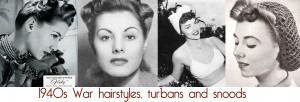
As in the First World war – women tied up their hair, but now it was high fashion. Top Hollywood stars like Veronica Lake was asked to trade her famous locks for the new ‘Victory Roll’, which she gamely did. Snoods were still popular – after the craze created by Vivien Leigh in Gone with the Wind. Turbans arrived from South America and in the UK and America – magazines abounded with suggested styles for women who had taken to being Land Girls or working in the munitions factories.
The American Look.
A prominent name in American fashion through the 1920s, 1930s and 1940s wasHattie Carnegie – not so much an innovative designer but a purveyor of US versions of high class haute couture from Europe – names such as Vionnet, Chanel, Schiaparelli and so on. A self-declared Francophile, she made frequent buying trips to Paris in the 1920s and 1930s. Her Vogue column “Vogue points from Hattie Carnegie” was much read. She designed also the Women’s Army Corps (WAC) uniform.
One name that stands out on the American side of the Atlantic is Claire McCardell – who in fact had trained under Carnegie! Her ready to wear fashions, with their simple functional style all fitted in with mass production and the new advent of consumerism. Perhaps the USA’s greatest designer. Through her – the American Look became a byword and temporarily – through the convenience perhaps of a Nazi occupied France – the US took dominance over Paris influence. Her demonstrating of women’s wear included innovations in 1940s swimwear and sportswear that was casual but highly chic.The 1940s swimsuit of choice for many American women was the diaper suit, which was a one piece wraparound.
The Modern Age of Fashion - 1945 to 1960.
However, no sooner after Paris was liberated came the ‘New Look’ from Christian Dior in 1946-47 and Paris glam was back on the map with full skirts, tiny cossetted waists and and prominent busts ( echoing the Belle Epoch days before and during the Edwardian era) . With the war over, women jumped at the chance to be truly feminine again, and with the fading of names like Schiaparelli and Vionnet and the temporary exile of Coco Chanel following her arrest as a Nazi sympathiser, the top designers of women’s clothing were once again – men. Elsa Schiaparelli who had moved to New York in 1940 and spent the war as a volunteer in various war relief organizations, never recovered her status. Her fashion house closed in 1954.
The early 1950′s fashion world was once again dominated by the French with Dior and Cristobel Balenciaga from Spain who founded his Paris fashion house in 1937,Pierre Cardin [ who was instrumental in helping Dior develop the New Look in the late 1940's ] , Pierre Balmain and Hubert de Givenchy leading the pack.
The early 1950′s fashion world was once again dominated by the French with Dior and Cristobel Balenciaga from Spain who founded his Paris fashion house in 1937,Pierre Cardin [ who was instrumental in helping Dior develop the New Look in the late 1940's ] , Pierre Balmain and Hubert de Givenchy leading the pack.
The new Look gave way to the Body-line - a shapely silhouette that had more angular hip lines.The sudden re-emergence in focusing on hips and bust was reminiscent of the corseted days of the Edwardian Era. Skirts went from full circle and pleated affairs to the ‘pencil skirt’. Chanel’s little black dress look came back with a bang and swimwear and lingerie began to see girdles and corsets re-emerge, albeit with much more glamorous and softer synthetic materials now employed.
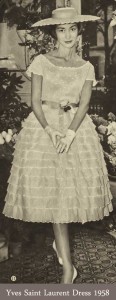
By the 1960′s, Yves Saint Laurent – who took over as head designer in 1957 after Dior’s untimely death. continued to bring innovative designs onto the catwalk. Laurent’s Pret-a-Porter or ‘ready to wear’ line expanded high fashion into mass production.
A Short History of Women’s Fashion – 1960′s London Style.
However, it was to the side streets of London that the fashion world increasingly turned – to find inspiration. It was the Age of Pop. The retailers of Carnaby Street, such as the great John Stephen with their casual ‘ throw it together’ styles and retro culture that appealed to the new youth movement, suddenly made high fashion appear dangerously irrelevant. Of course this was partly a myth, as even the casual styles found in London high streets like Camden and Portabello Roadstarted out their life in haute couture houses a few years earlier. The 1960′s in London was all about being ‘Retro’, and there was a huge interest amongst the younger generation in militaria.
Pop fashion was born and the retro theme culminated in popular music with – in particular - the Beatles enthusiastically embracing the movement on the cover of the iconic Sgt Pepper’s Lonely Hearts Club band album.The aforementioned John Stephen’s men’s and women’s apparel dressed Pop acts such as the Rolling Stones, the Kinks and The Who, and their even more glamorous girlfriends.
Pop fashion was born and the retro theme culminated in popular music with – in particular - the Beatles enthusiastically embracing the movement on the cover of the iconic Sgt Pepper’s Lonely Hearts Club band album.The aforementioned John Stephen’s men’s and women’s apparel dressed Pop acts such as the Rolling Stones, the Kinks and The Who, and their even more glamorous girlfriends.
The fashion modes of the late 1920′s and early 1930′s re-emerged – specifically amongst the younger generation of women, and designers like Mary Quant, took the 1930′s short ‘above the knee’ wrap over – [ worn originally over your swimsuit at the beach ] and turned it into the Mini skirt !
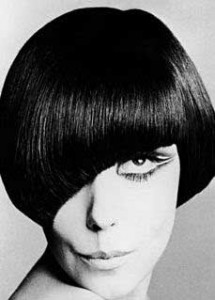

In 1966 an exhibition in Paris, ‘Les Années 25′ celebrated the 1925 International Exhibition of Modern Decorative and Industrial Arts) which had put Paris firmly at the top of the fashion firmament in the 1920s.In 1968 Bevis Hillier published ‘Art Deco of the 20s and 30s and from then on the term ‘art deco’ has been used to define that movement in art and design in the late 1920s.
English models like Twiggy and Jean Shrimpton became the new flapper icons with their unconventional beauty. Gone again – at least among younger women, were the corsets and girdles. Even brassieres were almost consigned to the dustbin – though common sense finally prevailed.
1960s Hairstyles – from Beehives to Bobs.
The beehive – made popular in 2010 by Amy Winehouse – and inspired by girl band The Ronettes – first appeared in Chicago in 1960 – devised by Margaret Vinci Coiffures in answer to a competition by Modern Beauty Salon‘s quest to find the ‘new hairstyle’ of the coming decade. It was also known as the B52 [ resembling the nose cone ].
Audrey Hepburn cemented the styles popularity with her own unique look. As in the 1920s, history repeated itself with the page boy cuts for women of Vidal Sassoon.
Suddenly the ‘haircut’ was back in ! Bobs and Crops abounding.
It’s difficult with any certainty to say how much ‘that is truly new’ – each era brings to a lady’s mode – but we’ll conclude this essay on women’s style with a quote fromChaucer - ” There’s never a fashion but it’s old ! “
Audrey Hepburn cemented the styles popularity with her own unique look. As in the 1920s, history repeated itself with the page boy cuts for women of Vidal Sassoon.
Suddenly the ‘haircut’ was back in ! Bobs and Crops abounding.
It’s difficult with any certainty to say how much ‘that is truly new’ – each era brings to a lady’s mode – but we’ll conclude this essay on women’s style with a quote fromChaucer - ” There’s never a fashion but it’s old ! “
text copyright Glamourdaze 2012
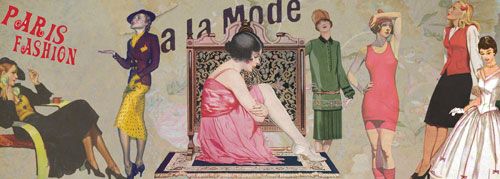

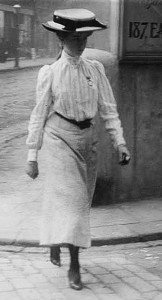
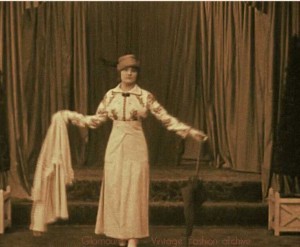

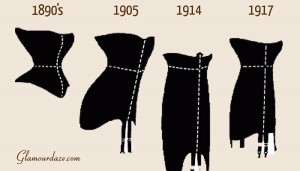
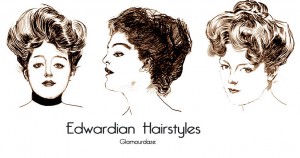
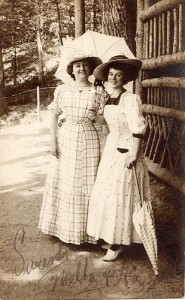
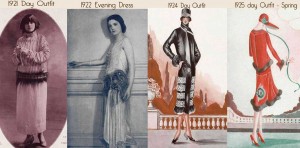
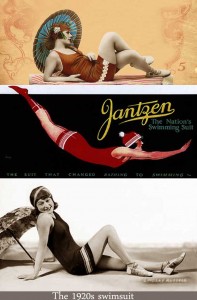
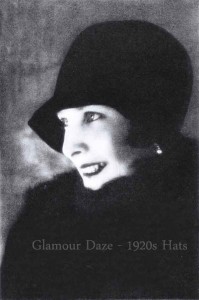
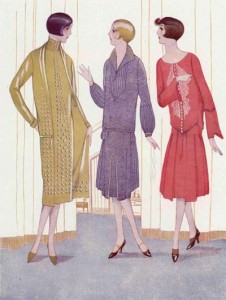

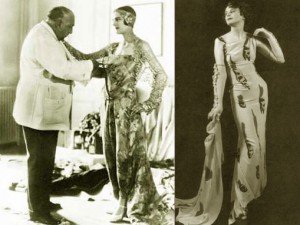

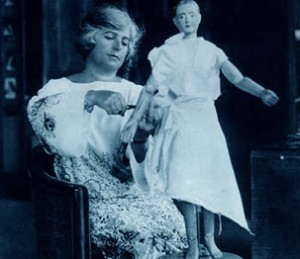
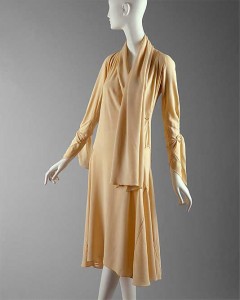

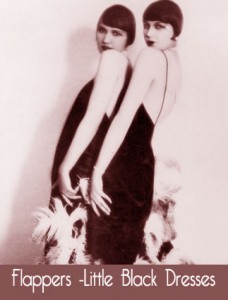
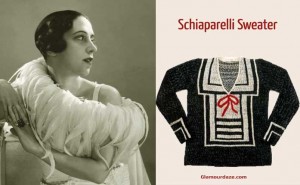
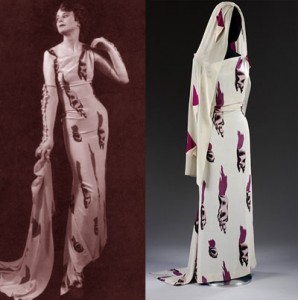
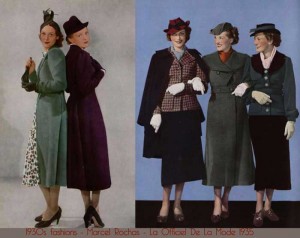
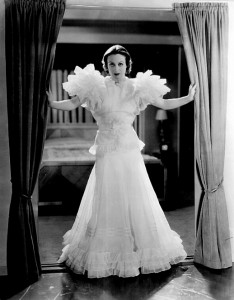
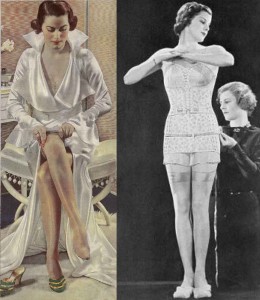
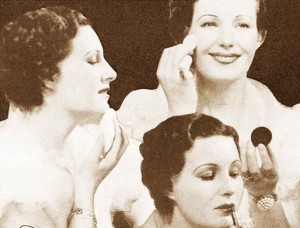

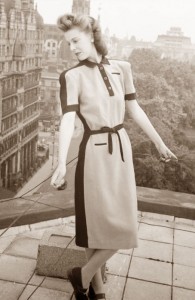
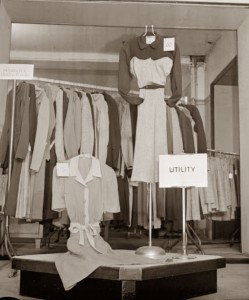
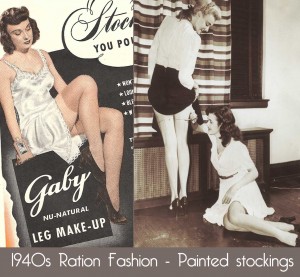
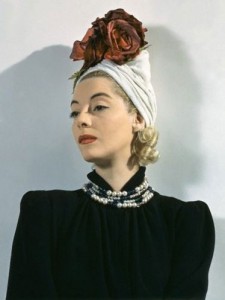
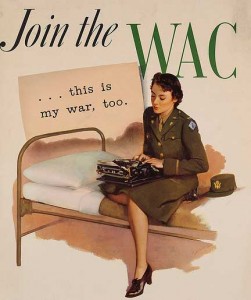
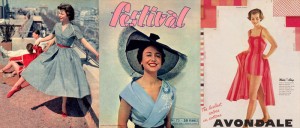
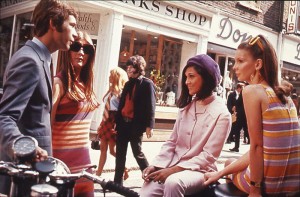
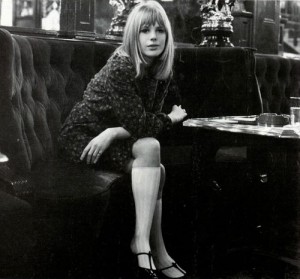
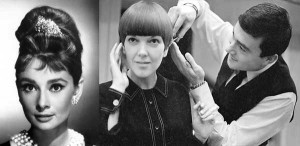








0 Comments